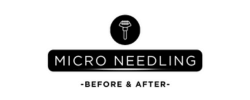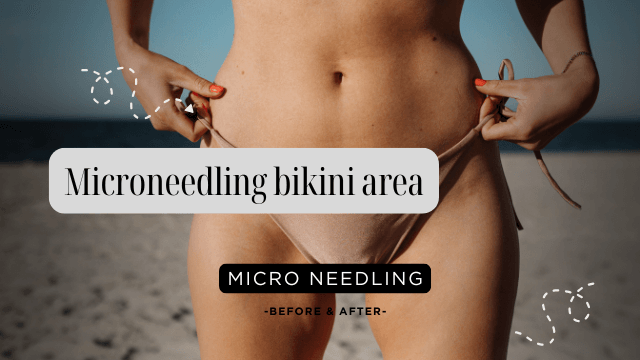As someone who’s explored various skincare treatments over the years, I’ve found that microneedling has become one of my go-to solutions for addressing skin concerns. While many people are familiar with microneedling for the face, I wanted to share my experience with a less-discussed application: microneedling in the bikini area. If you’ve been curious about this treatment for addressing hyperpigmentation, ingrown hairs, or stretch marks in your intimate areas, I’m here to give you the full scoop!
Understanding Microneedling Basics
Before diving into the specifics of bikini area treatments, let’s quickly cover what microneedling actually is. The procedure uses a device with tiny, fine needles that create controlled micro-injuries to the skin. These micro-injuries trigger your body’s natural healing response, stimulating collagen and elastin production. The result? Smoother, firmer, and more even-toned skin.
There are several types of microneedling treatments available:
- Traditional Microneedling: Uses a microneedle roller or pen device
- RF Microneedling: Combines microneedling with radiofrequency energy for enhanced results
- PRP Microneedling: Incorporates platelet-rich plasma from your own blood to supercharge healing
Why Consider Microneedling for the Bikini Area?
I first considered microneedling for my bikini area when I noticed persistent issues that weren’t responding to typical treatments. Here are some common concerns that microneedling can help address:
- Hyperpigmentation from waxing or shaving
- Ingrown hairs and resulting dark spots
- Stretch marks
- Skin laxity after pregnancy or weight fluctuations
- Scarring from previous procedures
The bikini area skin tends to be more sensitive than other body parts, yet it experiences significant trauma from hair removal methods, friction from clothing, and hormonal changes. Microneedling offers a targeted approach to these specific concerns.
My Personal Experience: What to Expect
When I decided to try microneedling for my bikini area, I was initially nervous. Would it be painful? Would the results be worth it? Here’s what my experience was like:
Finding a Qualified Provider
First and foremost, I researched providers extensively. This is crucial because microneedling regulations vary by state. In some states, estheticians can perform traditional microneedling, while in others, only medical professionals can administer the treatment. For RF microneedling or PRP microneedling, medical supervision is typically required regardless of location.
I chose a medical spa with a board-certified dermatologist who supervised all treatments. This gave me peace of mind about both safety and results.
The Procedure
The procedure itself took about 45 minutes. Here’s what happened:
- The area was thoroughly cleansed
- A strong numbing cream was applied for 30 minutes (essential for comfort!)
- The provider used a professional-grade microneedling pen, adjusting the needle depth based on the specific areas being treated
- A soothing serum was applied afterward
The discomfort was minimal thanks to the numbing cream – it felt like a light scratching sensation rather than pain. The most sensitive areas were treated with shallower needle depths.
Recovery and Results
Post-treatment, I experienced:
- Redness similar to a sunburn for about 24 hours
- Mild sensitivity for 2-3 days
- Tiny scabs that formed and fell off naturally within a week
The aftercare was crucial to my results. I:
- Avoided hot showers, swimming pools, and saunas for 72 hours
- Applied the recommended healing serum regularly
- Skipped tight clothing and synthetic fabrics for a week
- Avoided hair removal in the treated area for two weeks
- Used mineral-based sunscreen diligently when exposed
After three sessions spaced one month apart, I noticed significant improvements in texture, tone, and a remarkable reduction in recurring ingrown hairs.
Traditional vs. RF vs. PRP for Bikini Area
For my bikini area concerns, I opted for traditional microneedling first, then tried PRP for my third session. Here’s my take on the different options:
- Traditional microneedling was effective for general texture improvement and minor hyperpigmentation
- RF microneedling would be ideal for skin laxity concerns, as the radiofrequency energy provides additional tightening benefits
- PRP microneedling gave me the most dramatic results for stubborn hyperpigmentation and accelerated healing time
Final Thoughts
Microneedling the bikini area has been a game-changer for me. The treatment has boosted my confidence by addressing concerns that previously seemed untreatable. If you’re considering this procedure, remember:
- Research your provider thoroughly and check your state’s regulations
- Follow aftercare instructions meticulously
- Be patient – the best results come after multiple sessions
- Consider your specific concerns when choosing between traditional, RF, or PRP microneedling

